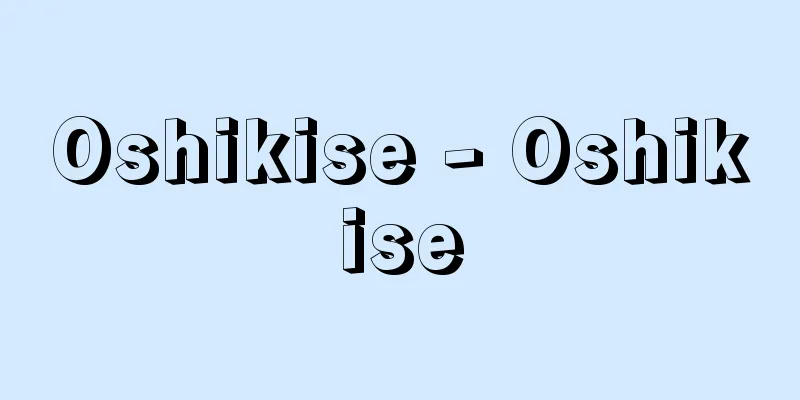Cutting edge - Kirikojo

|
A kabuki term used at the end of a day's performance in Edo-period theatre. It was customary for the head of the company to come on stage dressed in a formal kimono and greet the audience with "First of all, this is all for today." Because this phrasing was formulaic and stern, it came to be used in everyday language to mean a stiff, cold tone of voice, as in "to respond on the kireguchi line." [Toshiaki Matsui] Source: Shogakukan Encyclopedia Nipponica About Encyclopedia Nipponica Information | Legend |
|
歌舞伎(かぶき)用語。江戸時代の興行で1日の演目が終わるときの口上。裃(かみしも)姿の頭取が舞台に出て「まず今日(こんにち)はこれぎり」と挨拶(あいさつ)するのが通例で、その言い回しが型にはまり、いかめしかったことから、「切口上で応対する」というように、堅苦しく冷たい感じの口調を意味する日常語として使われるようになった。 [松井俊諭] 出典 小学館 日本大百科全書(ニッポニカ)日本大百科全書(ニッポニカ)について 情報 | 凡例 |
<<: Kirikosha (English name) jì lǐ gǔ chē
Recommend
Labor pains
… [Birth output] The birth force consists of uter...
Calamostatis - Calamostatis
… The stems, leaves, and reproductive organs are ...
National quality/national quality - Kunijichi Tokorojichi
A form of pawning (private seizure) by a creditor ...
Burgundy - Bourgogne (English spelling)
A historical region and former province in centra...
Tairagi (Tairagi) - Fan shell
A bivalve mollusks of the family Polytrichum commu...
Goldfish - Goldfish
…It is widely distributed from the Tohoku region ...
Blenny
…They are not caught in fisheries, and have littl...
Rubble movie - rubble movie
...Following Italy's Neorealism just after Wo...
Massive ore deposit
This refers to deposits that are irregular in sha...
Side Kyogen
(1) A classification name for Noh and Kyogen play...
Marsh, R.
…It includes various tendencies, but can be broad...
Metal pipe
Metal pipes. Ingots are rolled, welded, or otherwi...
Kyokutei Bakin
A novelist from the late Edo period. His surname ...
Martianus dermestoides (Korean mealworm beetle)
An insect of the Tenebrionidae family in the Coleo...
Speare, EG (English spelling)
…Since the 1960s, there have been various attempt...









